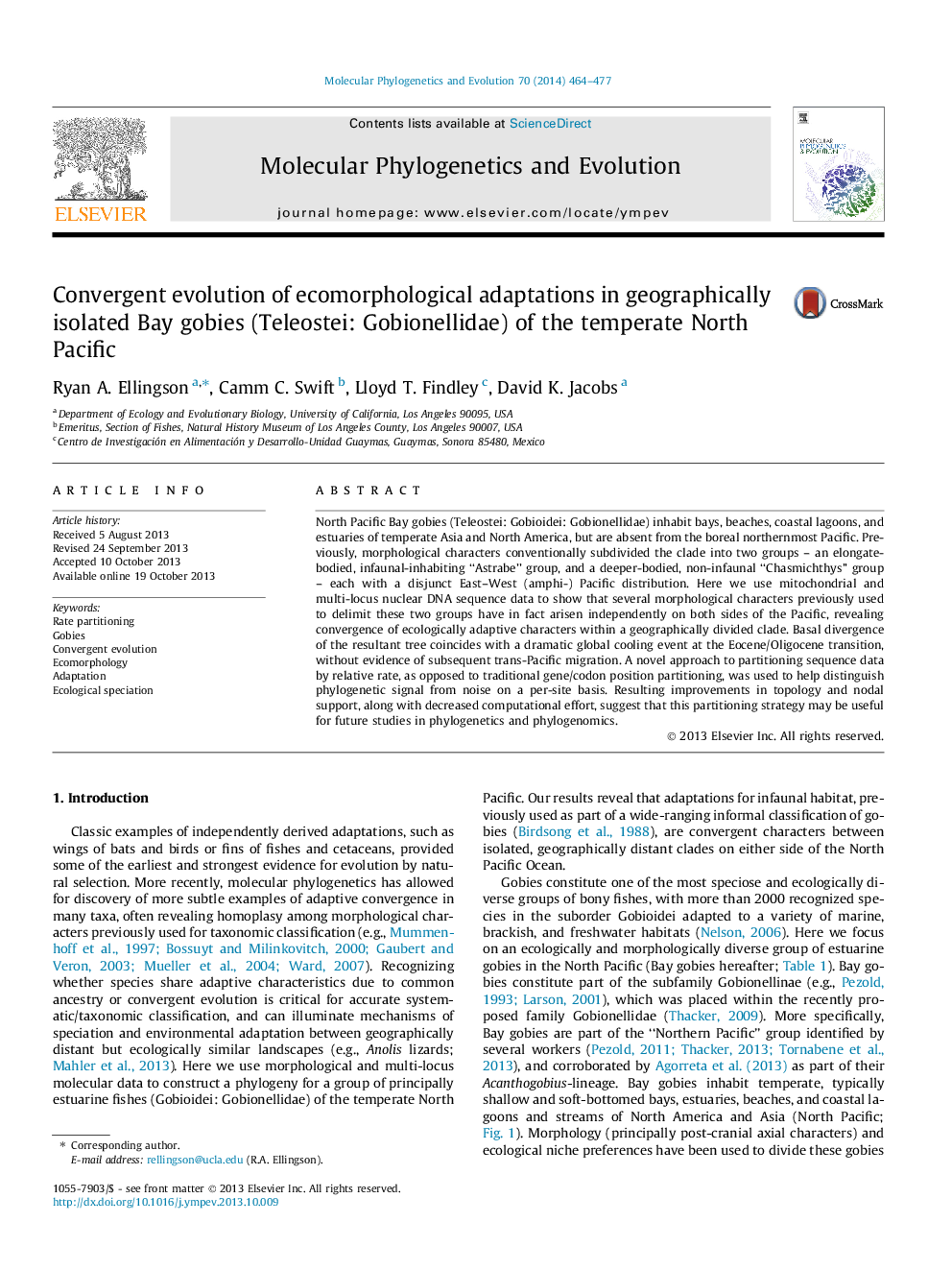| کد مقاله | کد نشریه | سال انتشار | مقاله انگلیسی | نسخه تمام متن |
|---|---|---|---|---|
| 5919415 | 1570825 | 2014 | 14 صفحه PDF | دانلود رایگان |

- We partitioned DNA sequences by relative per-site rate as compared to traditional strategy of gene and/or codon position.
- Relative per-site rate partitioning improved phylogenetic results and reduced computational effort.
- Interpretation of the Bay goby phylogeny considered both morphological and genetic data.
- Convergence of adaptive morphology between East and West Pacific clades was revealed.
- Climate-induced isolation between East and West Pacific clades has persisted for â¼34 million years.
North Pacific Bay gobies (Teleostei: Gobioidei: Gobionellidae) inhabit bays, beaches, coastal lagoons, and estuaries of temperate Asia and North America, but are absent from the boreal northernmost Pacific. Previously, morphological characters conventionally subdivided the clade into two groups - an elongate-bodied, infaunal-inhabiting “Astrabe” group, and a deeper-bodied, non-infaunal “Chasmichthys” group - each with a disjunct East-West (amphi-) Pacific distribution. Here we use mitochondrial and multi-locus nuclear DNA sequence data to show that several morphological characters previously used to delimit these two groups have in fact arisen independently on both sides of the Pacific, revealing convergence of ecologically adaptive characters within a geographically divided clade. Basal divergence of the resultant tree coincides with a dramatic global cooling event at the Eocene/Oligocene transition, without evidence of subsequent trans-Pacific migration. A novel approach to partitioning sequence data by relative rate, as opposed to traditional gene/codon position partitioning, was used to help distinguish phylogenetic signal from noise on a per-site basis. Resulting improvements in topology and nodal support, along with decreased computational effort, suggest that this partitioning strategy may be useful for future studies in phylogenetics and phylogenomics.
Journal: Molecular Phylogenetics and Evolution - Volume 70, January 2014, Pages 464-477